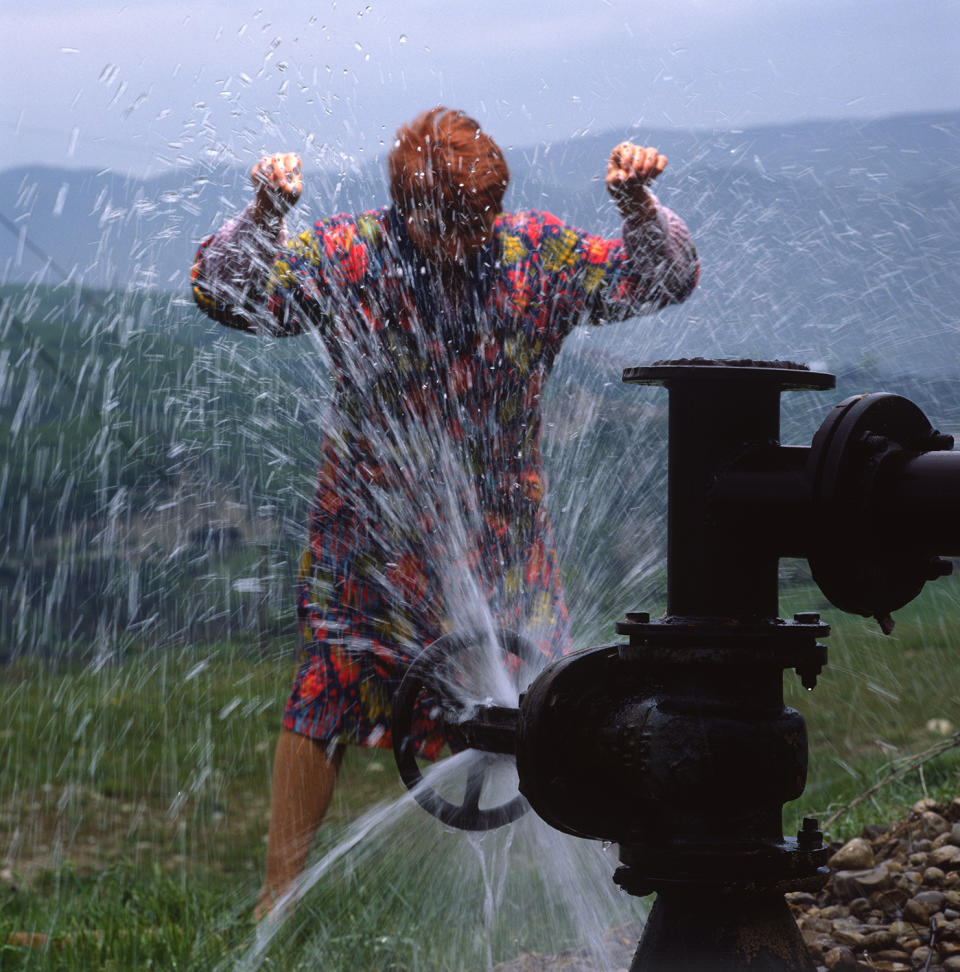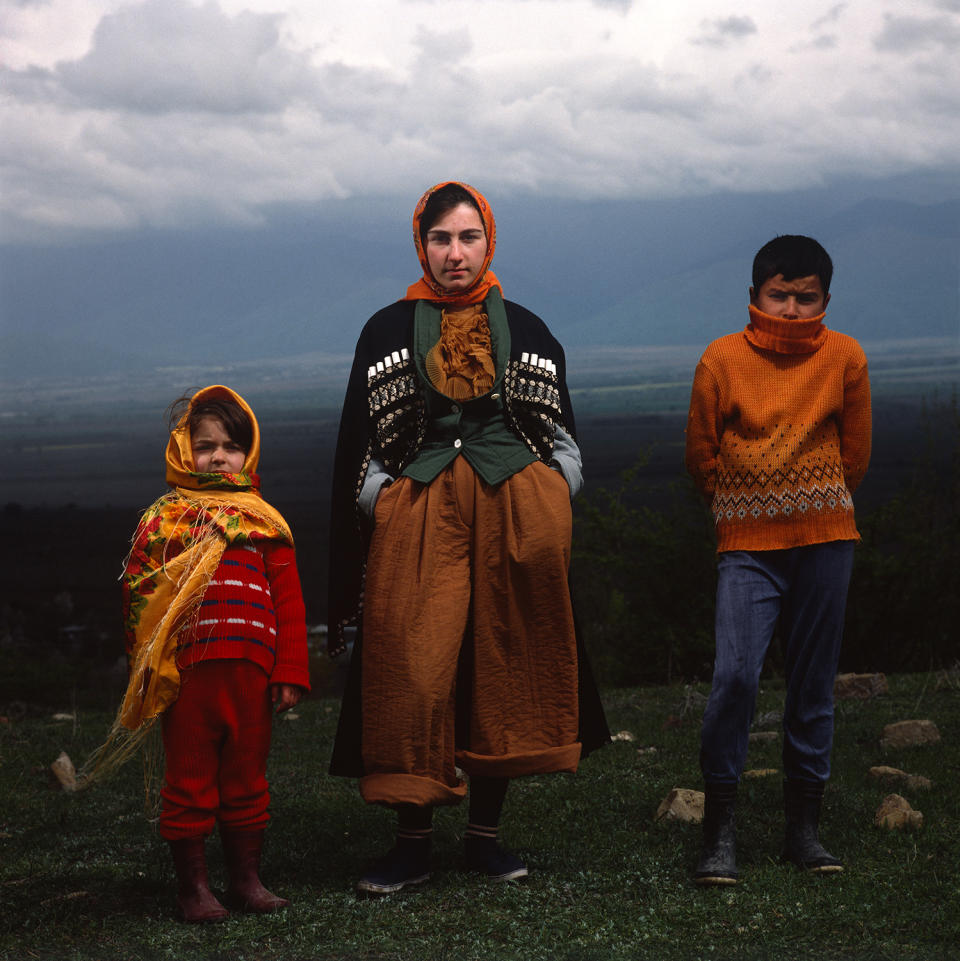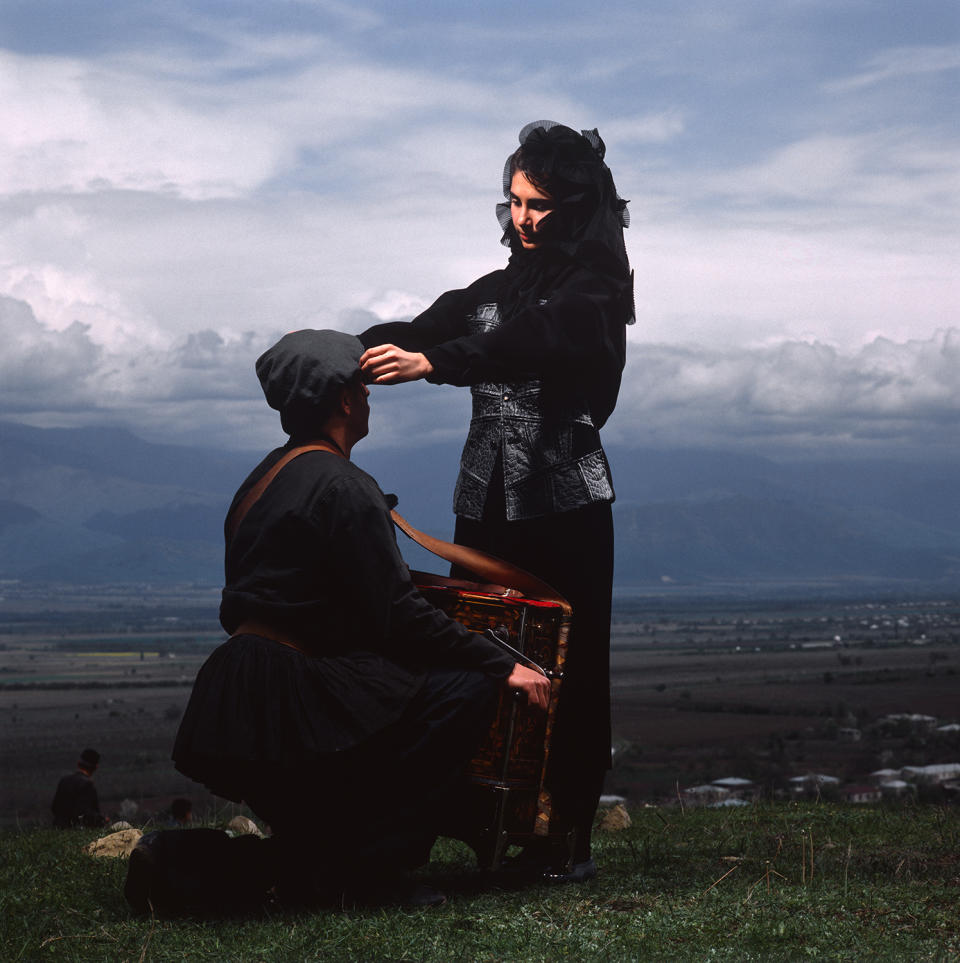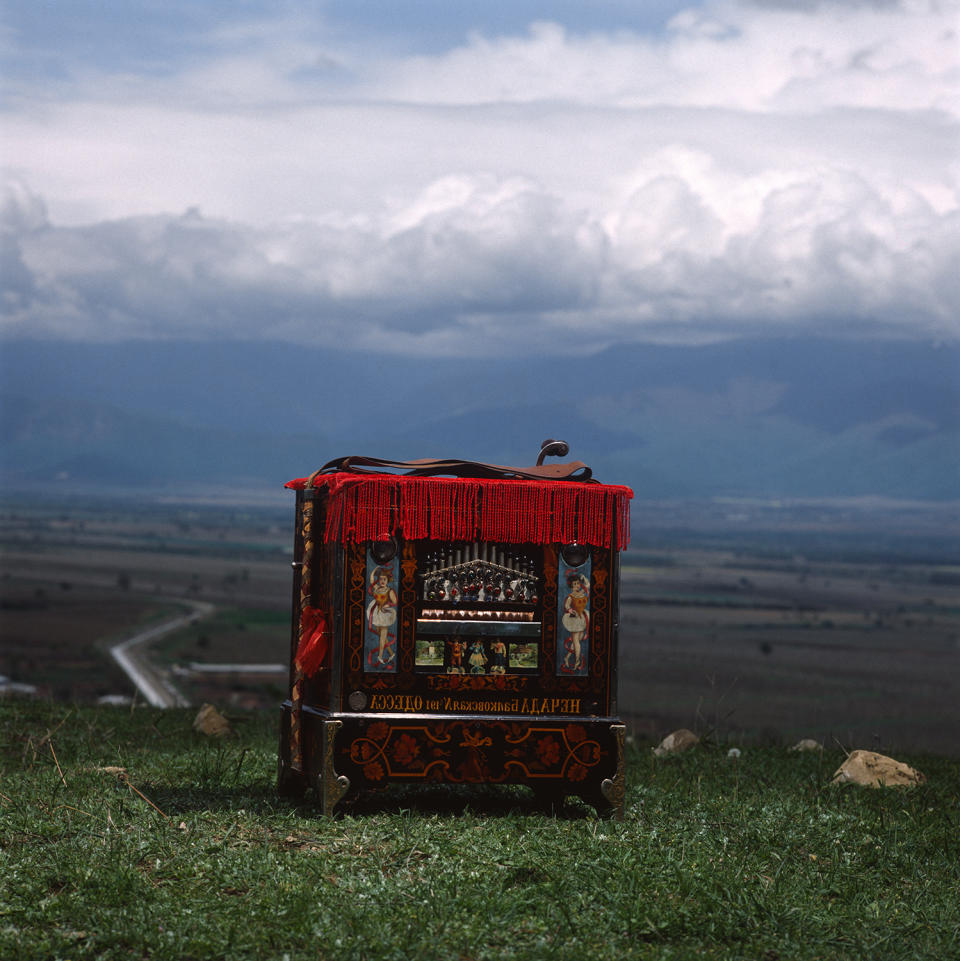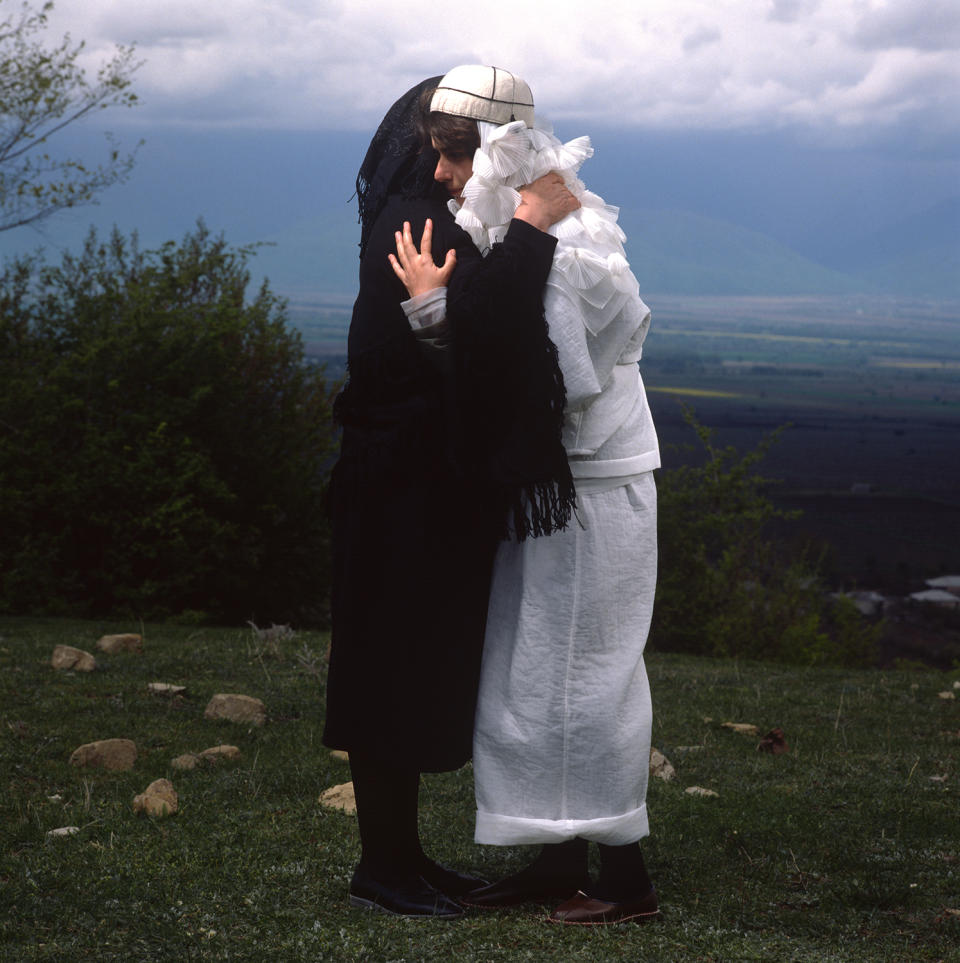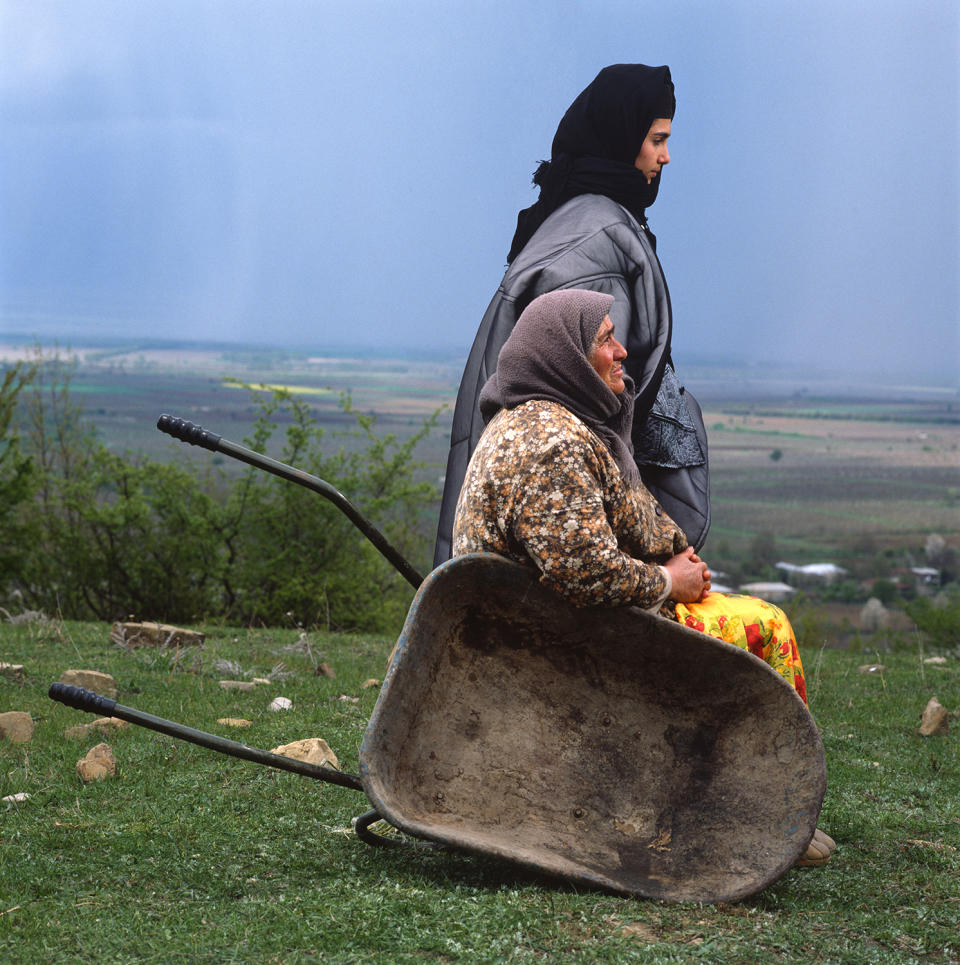A Series of Photos for Comme des Garçons Shot During Soviet Georgia Resurfaces in an Astonishing Exhibition
It was 1989 in Soviet-era Georgia, a country on the verge of gaining its independence. Statues of Stalin were being destroyed, animal sacrifice was the norm, and phone calls were under constant surveillance, but one thing was certain: The country was face to face with a new order.
Just 20 minutes from Georgia's capital, Tbilisi, British photographer Brian Griffin shot some of his most iconic photographs for Comme des Garçons’s now-defunct Six magazine — whose name stemmed from the phrase "sixth sense." This was the brand's unstapled A3 publication, containing no words, just images made to bring founder Rei Kawakubo's creative sensibilities to reality. As Griffin recalls, these images would later become Kawakubo's all-time favorites for the magazine.
For the first time in 26 years, the photographs will come to life thanks to their first exhibition, “Mother Georgia,” in partnership with Project ArtBeat, a contemporary art gallery startup based in Tbilisi. The exhibition debuted at the Museum of Modern Art Tbilisi during Mercedes-Benz Fashion Week Tblisi.
How did it all happen? Griffin tells Yahoo Style, "It was quite extraordinary when I met Rei … for some reason she chose me to work on [Six]. And the reason I say for "some reason" is because I was not a fashion photographer, and she only had real, top fashion photographers working on it in the world."
Although, at the time, Griffin was not established as a fashion photographer, he had previously worked with Kawakubo, photographing actor John Malkovich and musician John Cale from the Velvet Underground for Comme des Garçons. Soon after, this project for Six came along and Kawakubo commissioned Griffin to be the photographer and Georgian film director Sandro Vakhtangov to produce it.
But why choose Georgia? Truthfully, as Griffin remembers, "there were a lot of problems in this country at the time. It was quite dark, foreboding, and very little traffic around. Street lighting was very bad, [a lot of] pollution. The hotel up the street [from the MoMA Tbilisi], which no longer exists, was like a real Soviet hotel."
Despite this, Kawakubo was inspired to shoot in Georgia by the Georgian artist Niko Pirosmani. He is best known for his paintings featuring Georgian locals in their everyday routine, depicting rural life. Griffin, coincidentally, was a fan of Pirosmani as well.
In short, the entire shoot featured only Georgian locals; no professional models. The concept was to have the locals wear their traditional attire intermixed with Comme des Garçons pieces. One example was a "chokha" worn by one of the locals, a traditional Georgian style of dress. It is a wool coat featuring panels of bullet holders across the chest — a symbol of Georgian nationalism.
Remarkably, the entire shoot was also captured by producer Vakhtangov in a fuzzy VHS taping, later uploaded to YouTube by Griffin, which began the frenzied interest into the shoot's origins by British magazine Dazed & Confused. The footage was projected onto a large screen during the exhibition, featuring Griffin, Vakhtangov, Kawakubo, and her assistant, Yuki, during the course of the shoot.
Raw, original, and completely stripped of any editing, the film demonstrated the subtle, precise styling decisions made by the team and the cold environment of rural Georgia at the time. Kawakubo, seen sparingly in the film draped in a black headscarf, stands quietly in the background communicating intermittently with her assistant, Yuki, to translate her creative vision to Griffin. In this rare footage, it is fascinating to see Kawakubo in action considering she was and still is a very private person.
This shoot would become the launching pad for Griffin's future fashion career. "She gave me an incredible precedent in the last issue. I photographed Harry Dean Stanton, in different shirts in Paris for her, and then the magazine folded. I never worked with her again," says Griffin.
The convergence of old and new is clear in the photographs and a sign of the blurred lines between Soviet rule and independence, which Georgia would acquire just two years after the shoot, in 1991.
The image of Kartlis Deda, the statue known as "Mother Georgia," became the defining image of the entire collection. Shot by Griffin after Kawakubo had already left Georgia, it features a border of red tulips surrounding the statue — a sign of hope, new life, and better times ahead.
Click on to see images from the "Mother Georgia" exhibition by Brian Griffin. And as Griffin reminds us: "Remember this was film days. All this is straightforward film. No Photoshop at all.”
Follow us on Instagram, Facebook, and Pinterest for nonstop inspiration delivered fresh to your feed, every day.



